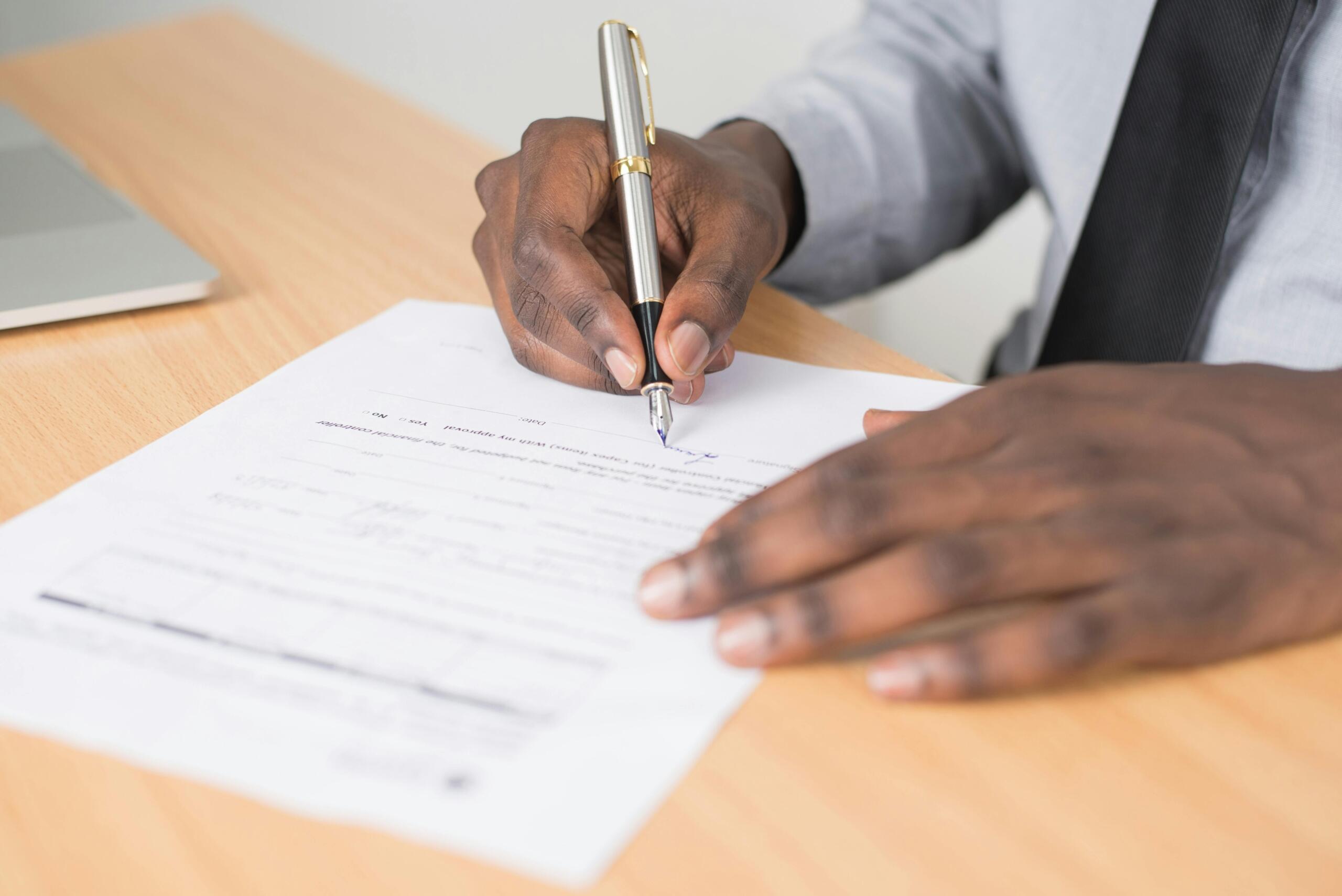There are a few things in this life that can equate to the freedom one feels when riding down the highway on a motorcycle. This is likely why so many of us fantasize about heading off on a road trip and setting off on two wheels. However, before you get the liberty of feeling the wind in your hair and riding those windy roads, there are several requirements you’ll need to meet. After spending a fair chunk of your savings on a bike, the last thing you want is to run the risk of having it taken away from you, too. This is the reality, seeing as without proper licensing, you can face license suspension, driving record points, steep fines, and your motorcycle might be confiscated. In most states, the requirements to get your hands on a motorcycle license include both theory and practical tests. In this article, we’re going to take a look at the requirements you’ll need to meet to legally obtain the various license classes available here in the US. You’ll see which requirements apply nationwide and which you can expect to vary from one state to the next. So, by the time you finish your reading, you’ll not only know all you need to get your hands on your very own license, but also that nothing happens to your beloved bike!
| Requirements | Minors Age 15½ to 17 | Adults Age 18 to 20 | Adults Age 21 and Over |
|---|---|---|---|
| Driver education and behind-the-wheel driver training certificates of completion | ✓ | N/A | N/A |
| Certificates of Completion of Motorcycle Training (DL 389) | ✓ | ✓ | N/A |
| Complete a Driver License or Identification Card Application (DL44 or DL44C) | ✓ | ✓ | ✓ |
| Complete a Driver License or Identification Card Application (DL44 or DL44C) | ✓ | N/A | N/A |
| Parent(s) or guardian(s) signature (if a minor) | ✓ | ✓ | ✓ |
| Pass a vision exam | ✓ | ✓ | ✓ |
| Fingerprint(s) | ✓ | ✓ | ✓ |
| Pay required fees | ✓ | ✓ | ✓ |
| Have your photograph taken | ✓ | ✓ | ✓ |
| *Pass the applicable knowledge and skills tests | ✓ | ✓ | ✓ |
| Have an instruction permit for at least 6 months | ✓ | ✓ | N/A |

Do You Need a Motorcycle License?
When trying to arrive at a concrete understanding of what stands between you and the romanticized image you likely have in your head of riding that motorcycle, you’re likely wondering if you’ll need to get a license. Understanding the full list of motorcycle license requirements is the first step to applying for a motorcycle license and getting legally licensed to ride.

Well, even if you’ve already racked up decades of experience driving on four wheels, the skills you’ll need to be able to operate a motorcycle on the roads differ quite a bit. Even if you’ve already experienced riding bikes at home, you still need formal training that will ensure your safety and that of other road users. For that reason, you need a motorcycle license or endorsement to legally ride a motorcycle on public roads here in the US. So, what are the requirements to get a motorcycle license in your area? They often include a combination of written tests, training, and a minimum age requirement.
When a Regular Driver's License Isn't Enough
The main license that you either already have in your wallet or are familiar with is the standard driver's license (typically Class D).1

With this, you’re able to drive non-commercial passenger vehicles on public roads across the country.
However, if you are thinking about making the jump over to riding a motorcycle or you’ve already jumped the gun and purchased one, you’ll need either a Class M license or a motorcycle endorsement added to your current driver's license.
With this license class under your belt, you have clear proof that you can safely handle a motorcycle and will be able to ride legally. So, there is a need to pass motorcycle-specific knowledge and skills tests that regular driver's licensing doesn't cover.
Penalties for Riding Without a Class M License
Suppose the idea of getting closer to being able to take off on your motorcycle and experiencing that sense of freedom isn’t doing it. The penalties and consequences of not meeting the requirements can be equally, if not more, motivating. So, let us be the ones to tell you that the safety risks are just the beginning, as you'll face serious legal and financial troubles too.
Getting caught without a motorcycle license means fines from $195 to $500, depending on your state and if you've done it before.
While it might sting, getting a fine would actually be the ideal outcome, as driving without your license is reason enough for the Police to take your motorcycle away. This is a big deal as towing and storage fees can quickly add up to more than $500.2 So, if you don’t want to have to reach deep into your pockets for any fines that might incur or run the risk of having your prodigy and joy taken from you, you’ll want to ensure that you meet the requirements we’ve taken the time to outline in this article.
State-Specific Requirements
Of course, things would be a lot simpler if one set of rules were applied across the country, but things don’t work like that here in the US. Saying that you weren’t familiar with the rules when you’re pulled over in any state won’t cut it either, as it’s you’re obligation as a road user to familiarize yourself with the laws of the state that you’re driving in. If you're asking, what are the requirements for a motorcycle license? You’ll need to consider factors like identity documents, residency, and safety course completion.

The requirements that you’ll need to meet in order to get your motorcycle license will vary from state to state. For instance, in Texas, riders need to be at least 15 years old and finish an approved motorcycle safety course.3 You could then look at Illinois, where riders can only get a permit at 16, and have to wait until they are 18 before getting a full license, unless a safety course is completed. Michigan uses a CY endorsement instead of a separate license.4 Wisconsin allows riders to get a Class M license with special road skills tests just for motorcycles.1 One commonality across most states that you check is that there is a need for a mix of knowledge tests, skills tests, and safety courses, even though the details differ.
Class M requirements
Seeing as Class M licenses are likely what you’ve been setting your sights on, let’s start there. The Class M license is the main category of license that you’ll need to add to your wallet if you want to drive here in the US. There’s quite a bit of overlap across most states, with just certain requirements changing, depending on the state you find yourself in, so do be sure to double-check prior to turning on that ignition.
In terms of the hurdles standing in your way, you’ll need to pass a motorcycle knowledge test, a vision screening, along an on-cycle road skills test.5
Washington state offers a permit knowledge test with 50 multiple-choice questions that cover road rules and motorcycle safety.6
Then, if you find yourself in the likes of Idaho, Missouri or Oklahoma, you’ll be glad to learn that there are just 25 multiple-choice questions for this component of the process.

You may be less enthused to find that the pass rate is set at 80% for these, meaning you’ll need to get at least twenty of these correct, leaving little room for error. The skills test is, of course, a major part of the requirements to obtain this license class, showing you know how to operate a motorcycle safely and legally by testing your vehicle control in different situations.
The price of a motorcycle license in the USA varies by state and can range from $20 to $500, depending on factors like the type of license, training courses, and state-specific fees. Generally, a Class M license allows operation of motorcycles and motor-driven cycles.
Another requirement is actually the price of the license itself. For instance, if you’re in Arkansas, you can expect to be charged $40 for an 8-year license, while over in Missouri. You’ll have options of whether you opt for a 3-year license costing $10 or a 6-year license for $20. If you want to fast-track the amount of time standing between you and receiving your license, then you’ll want to look into Motorcycle safety courses. Many states offer these courses, and they often exempt riders from certain aspects of the standard testing process.

What Do You Need For Class M1 License?
It could be that the license class that you’ve been studying is actually the M1 license that they have over in California, along with states like Georgia, Alaska and Virginia. Now, this license is going to allow you to drive all sorts of vehicles from mopeds, scooters and motorcycles above and beyond 250cc. So, regardless of what sort of engine you’ve got in the bike that’s been sitting in your garage, or maybe it's still sitting at the dealership, this license will get you on the road if you’re in one of these states.
Some states offer alternatives to the skills test. California accepts a Certificate of Completion of Motorcycle Training (DL 389), which remains valid for 12 months from its issue date.
The first requirement you’ll need to meet in order to progress is that you’re going to need to be at least 16 or 17 years of age, depending on the state. With this box ticked, you can move to gathering all of the required information, such as valid identification, residential address, and proof of U.S. citizenship or lawful status. From here, you can expect to have to pass the associated theory test and motorcycle skills test.
Requirements for the Class M2 License
If the bike that you’ve got in mind is a little smaller, then the M2 license class is likely the one that’s going to suit you most. This is for smaller engine sizes, catering for engines that are 150cc or smaller. So, this could be anything from mopeds to motorized bicycles, basically anything that has a top speed that falls beneath 30 mph.7 The M2 license covers vehicles that have operational pedals to accelerate, automatic transmissions with less than two gross brake horsepower, or electric engines with or without acceleration pedals.
Despite the smaller size of the vehicle you’re going to be operating, you’re still a road user, so the requirements aren’t going to be a whole lot easier. Remember, the requirements are there to protect you, as well as other drivers who share the road with you. So, in order to make it to the first stage of the process, you’ll need ot be at least 16 years of age in most states. Similarly to the other license classes, you’re going to need proof of identity for the DMV, like a birth certificate or passport, Social Security Number, thumbprint, and photo.
If the idea of having that M2 license in your pocket and being able to ride your bike legally from any early age serves as your current motivation, then you’ll want to note that it’s not going to be a walk in the park. Certain states, like California makes it have an additional requirement for applicants under 21 to complete a California Motorcyclist Safety Program (CMSP) approved rider training course, though having this will exempt you from certain parts of the assessment process.
The skills test is going to evaluate all aspects of your driving, leaving no stone unturned and ensuring your driving is up to standard when it comes to circle rides, slow rides, gear shifting, tracking paths, and serpentine rides around traffic cones.
Getting Your Motorcycle License
Now that you’ve got an understanding of the various requirements that stand between you and the various motorcycle license classes available across the US, you’ll know exactly what to expect as you navigate the process for yourself. It’s imperative that you check for requirements for the state in which you reside in order to ensure that you don’t encounter any hiccups or unnecessary headaches along the way. Now that you know the requirements for obtaining a motorcycle licence here in the US, you’ll be able to plan accordingly and make sure you’ve got all of the documentation in order beforehand. You’ll then be able to make your way through the various components of the assessment process and begin checking those boxes and narrowing the gap between your current self and the dream you have of riding your motorcycle legally.
References
1. Schwaba Law Firm. “Penalties for Riding Without a Motorcycle License.” Schwaba Law. https://www.schwabalaw.com/penalties-riding-without-motorcycle-license/.
2. Quora. “What Happens if You Get Pulled Over Without a Motorcycle License in Texas?” Quora. https://www.quora.com/What-happens-if-you-get-pulled-over-without-a-motorcycle-license-in-Texas.
3. Attorney Brian White & Associates. “Are There Different Types of Motorcycle Licenses in Texas?” Attorney Brian White Personal Injury Lawyers. https://attorneybrianwhite.com/blog/are-there-different-types-of-motorcycle-licenses-in-texas/.
4. Christensen Law. “Do You Need a Motorcycle License in Michigan?” Christensen Law. https://davidchristensenlaw.com/need-motorcycle-license-michigan/.
5. Tennessee Department of Safety & Homeland Security. “Class M Motorcycle License.” Tennessee Government. https://www.tn.gov/safety/driver-services/classm.html.
6. Washington Motorcycle Safety Training (WMST). “How to Add a Motorcycle Endorsement to Your License.” Washington Motorcycle Safety Training. https://gowmst.com/motorcycle-washington-motorcycle-safety-training-permit-endorsement-testing-dol-approved/motorcycle-how-to-add-a-motorcycle-endorsement-to-your-license/.
7. Damon Motorcycles. “Do You Need a License for an Electric Motorcycle? (and Other FAQs).” Damon Motorcycles Blog. https://damon.com/blog/do-you-need-a-license-for-an-electric-motorcycle-and-other-faqs/.















